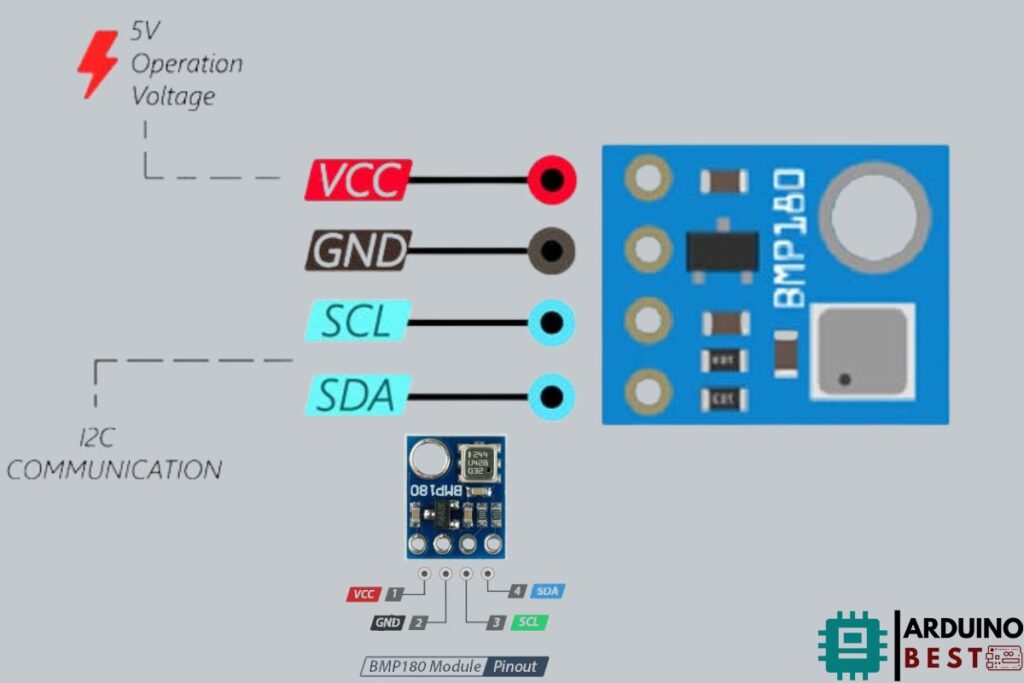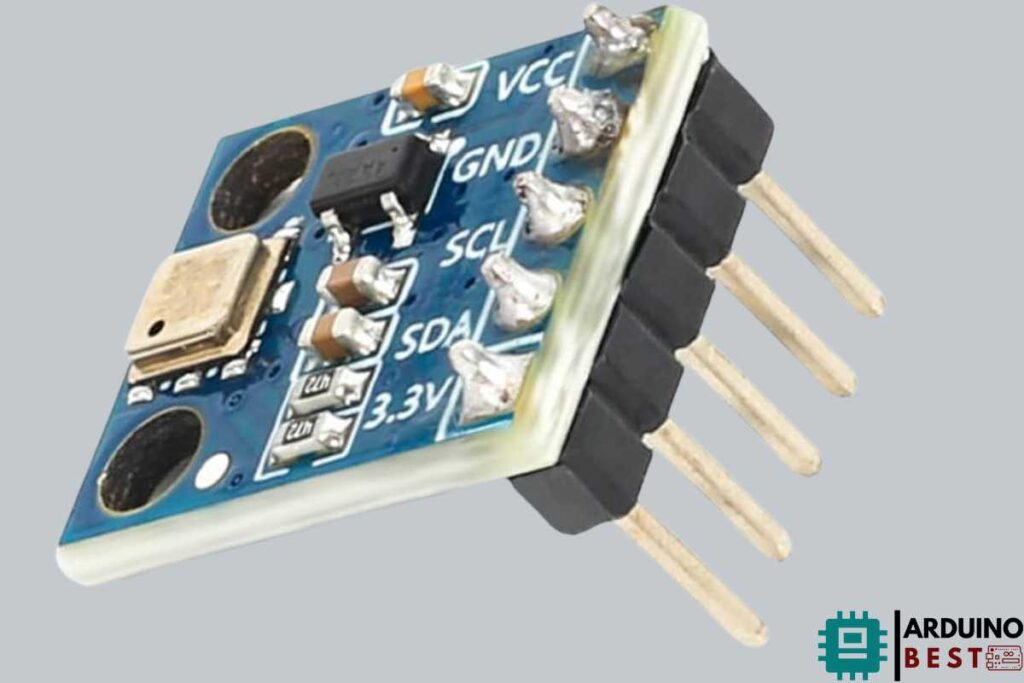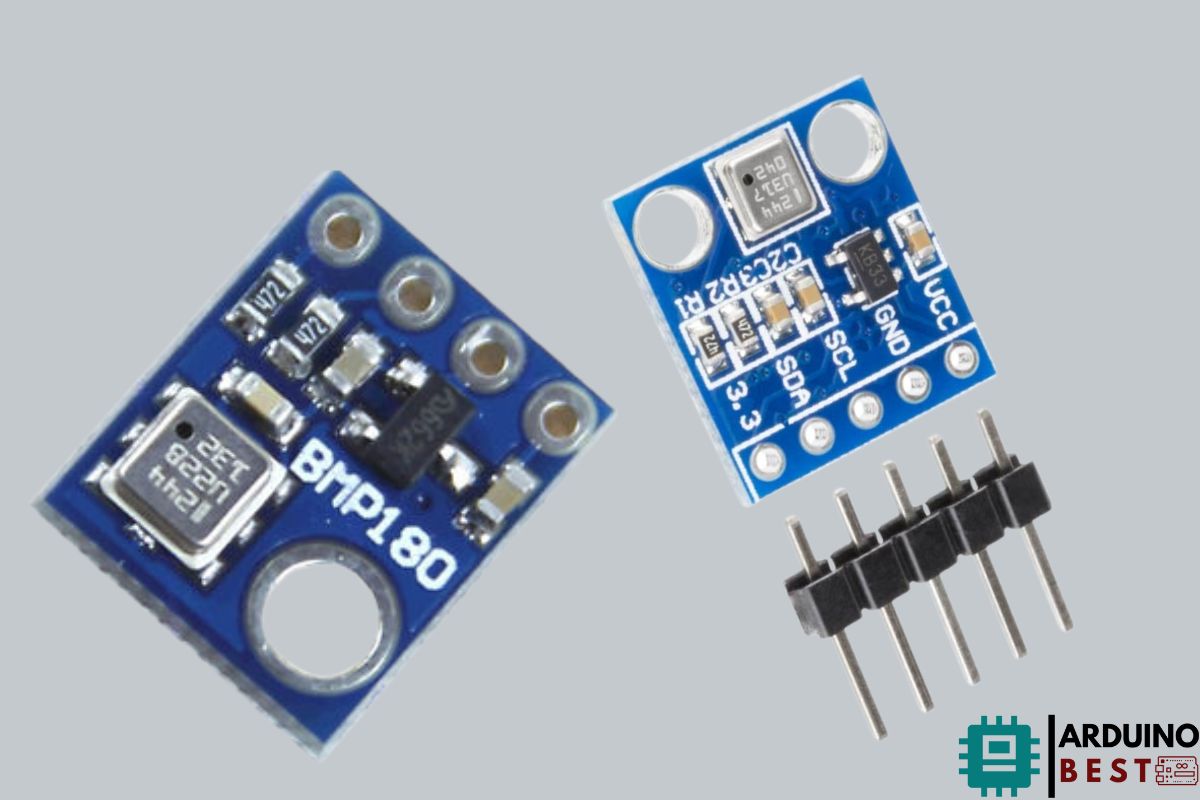Table of Contents
Introduction
The BMP180 is a high-precision barometric pressure and altitude sensor widely used in weather stations, GPS navigation, and embedded systems. It is a successor to the BMP085 and is known for its compact size, low power consumption, and high accuracy. With its ability to measure atmospheric pressure and calculate altitude, it plays a crucial role in various IoT and sensor-based applications.

Understanding how the BMP180 works and how to integrate it with microcontrollers like Arduino and Raspberry Pi can help developers create efficient and reliable systems. You can find a detailed hookup guide on SparkFun to get started with the sensor’s interfacing and programming.
Understanding Barometric Pressure and Altitude Measurement
The BMP180 works by detecting barometric pressure changes and converting them into altitude readings using predefined formulas. Since atmospheric pressure decreases as altitude increases, the sensor applies a temperature compensation algorithm to improve accuracy. The following formula is typically used to estimate altitude:
Where:
- Pressure = Measured pressure in Pascals
- P0 = Standard sea-level pressure (~1013.25 hPa)
For more details on how barometric pressure sensors work and their applications, refer to this OEM Secrets article.

Technical Specifications of BMP180
Here are the key specifications of the BMP180 sensor:
- Pressure range: 300 – 1100 hPa
- Resolution: 0.03 hPa (0.25m altitude resolution)
- Temperature range: -40 to +85°C (accuracy: ±2°C)
- Supply voltage: 1.8V – 6V
- Interface: I²C (Inter-Integrated Circuit)
- Power consumption: Extremely low, making it ideal for battery-powered applications
How BMP180 Works
The BMP180 uses piezoresistive technology to measure pressure. It contains an internal EEPROM with calibration coefficients to correct raw data before outputting results. Key working principles include:
- The sensor detects atmospheric pressure via a pressure-sensing diaphragm.
- The built-in analog-to-digital converter (ADC) converts this pressure into digital signals.
- A compensation algorithm adjusts readings for temperature variations to improve accuracy.
- The final values are provided over an I²C interface for easy microcontroller integration.
Comparison: BMP180 vs. Other Sensors
The BMP180 is often compared to other barometric pressure sensors like BMP085 (its predecessor) and BME280. Here’s how it stacks up:
| Feature | BMP085 | BMP180 | BME280 |
|---|---|---|---|
| Accuracy | 1 hPa | 0.03 hPa | 0.12 hPa |
| Temperature Sensor | No | Yes | Yes |
| Power Consumption | High | Low | Very Low |
| Interface | I²C/SPI | I²C | I²C/SPI |
| Additional Features | None | None | Humidity Sensor |
The BME280 includes humidity sensing, while the BMP180 remains a reliable, lower-cost option for basic barometric pressure and altitude measurements.
Interfacing BMP180 with Microcontrollers
To use the BMP180 with a microcontroller (like an Arduino), follow these steps:
Wiring BMP180 to an Arduino
| BMP180 Pin | Arduino Pin |
| VCC | 3.3V/5V |
| GND | GND |
| SCL | A5 (I²C) |
| SDA | A4 (I²C) |
Sample Code for Reading Pressure and Temperature
#include <Wire.h>
#include <Adafruit_BMP085.h>
Adafruit_BMP085 bmp;
void setup() {
Serial.begin(9600);
if (!bmp.begin()) {
Serial.println("Could not find a valid BMP180 sensor!");
while (1);
}
}
void loop() {
Serial.print("Pressure: ");
Serial.print(bmp.readPressure());
Serial.println(" Pa");
delay(1000);
}Applications of BMP180 Sensor
The BMP180 is widely used in:
- Weather Stations – For monitoring atmospheric pressure changes.
- GPS Navigation – Provides altitude data to improve GPS accuracy.
- Smartphones & Wearables – Integrated into altimeter apps.
- Drones & UAVs – Helps adjust flight stability based on altitude readings.
Troubleshooting & Calibration
Common Issues and Fixes:
- Incorrect Readings? Check power supply voltage and I²C connections.
- Sensor Not Detected? Ensure correct wiring and install the necessary Adafruit BMP180 library.
- Inconsistent Data? Perform calibration by comparing with a known pressure source.
FAQs: People Also Ask
1. How accurate is the BMP180 sensor?
- It provides pressure accuracy of ±0.03 hPa, translating to altitude accuracy of ~0.25m.
2. Can BMP180 measure altitude accurately?
- Yes, but minor temperature fluctuations and air pressure changes can affect results.
3. How do I connect BMP180 to an Arduino?
- Use the I²C SDA and SCL pins (A4 and A5 on Arduino Uno).
4. What are the differences between BMP180 and BMP280?
- The BMP280 offers higher accuracy, lower power consumption, and humidity sensing.
5. Is BMP180 suitable for battery-powered applications?
- Yes, its low power consumption makes it ideal for portable projects.
Here we suggest other projects:
1- Complete Guide for DHT11/DHT22 Humidity and Temperature Sensor With Arduino
2- DHT11 – Temperature and Humidity Sensor
3- DHT22 – Temperature and Humidity Sensor (more accurate than DHT11)

